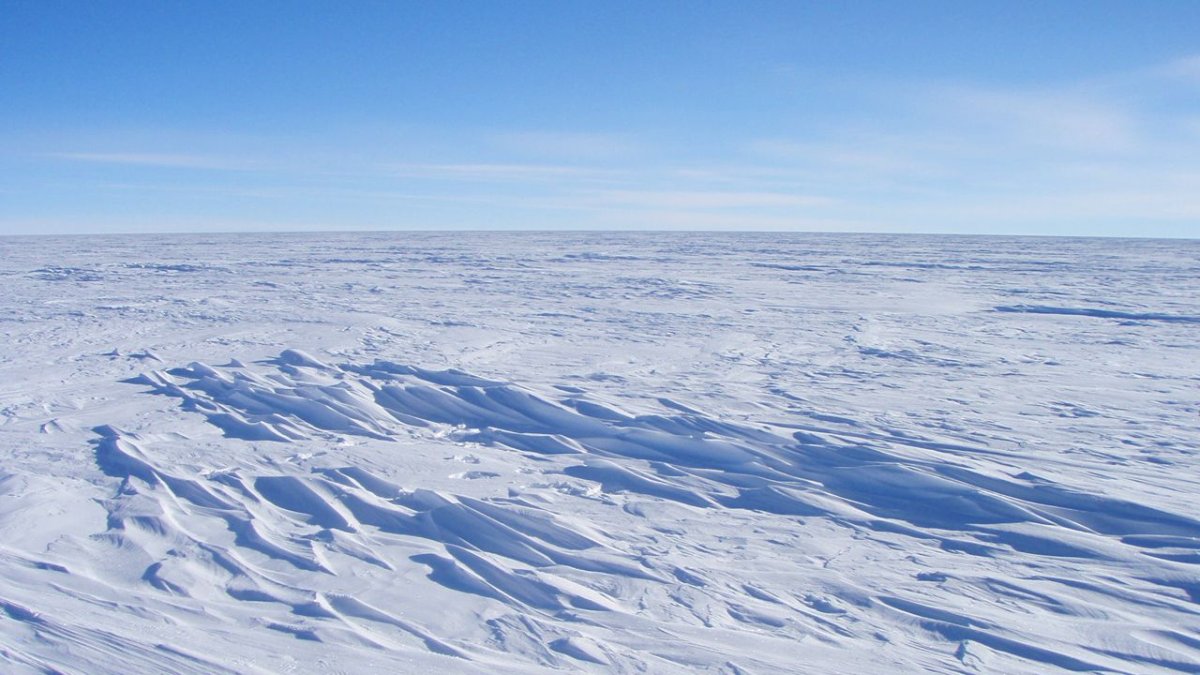Imagine yourself standing in East Antarctica, far away from the penguin-dotted coasts. (Not right now, in the middle of southern winter. Imagine it's December or January, when the sun never quite manages to set and the temperatures are a little less lethally freezing.) Ice stretches out in every direction around you, a bare expanse of unbroken whiteness raked by the wind.
But the region isn't as tranquil geologically as that description might make it sound, according to a new paper published in the journal Nature Geoscience. In that study, scientists report the discovery of small earthquakes in East Antarctica, a phenomenon nobody has been able to measure before.
Those quakes only deepen a longstanding geological mystery of the area, because a hidden mountain chain lurks more than a mile below the ice sheet. "It's so flat and white and boring in every direction but underneath you is a mountain range as big as the Pyrenees," Robin Bell, a geophysicist at Columbia University's Lamont-Doherty Earth Observatory in New York, who wasn't involved in the new study, told Newsweek.
And that's weird because mountain ranges usually form near the edges of tectonic plates, where they bump into each other. "You aren't supposed to have mountains in the middle of continents," Bell said. "Nothing smashed together in the middle of Antarctica recently."
But according to the study's first author, Amanda Lough, a seismologist at Drexel University in Pennsylvania, the mountains might be the scars of much older geologic activity.
The study relied on data gathered in 2009 by a network of seismic sensors deployed by Lough and colleagues across East Antarctica. The project marks the first time scientists have had access to decent seismic data from the region. "To get winter data in Antarctica before, we had a couple permanent stations but the interior wasn't covered at all," Lough said. "It was this huge step forward."
Read more: How Did Ancient Humans Travel to America from Asia? New Research Looks at Pacific Coast
But simply collecting the data wasn't enough, since there are plenty of phenomena that can cause seismic signals besides actual seismic activity. The team buried the sensors within the ice itself to keep them from accidentally seeing earthquakes in the wind. But Lough also had to go through and eliminate false signals produced by movements of the ice, calculating the depth of each signal to make sure it came directly from the land below.
That left 27 earthquakes measured over the course of the year. None of those were particularly large—all were smaller than a magnitude 4, and Lough said she isn't sure any would have been strong enough to feel.
But for a continent seismologists had thought was utterly still, an earthquake every two weeks on average, no matter the size, is a notable finding. Lough and her colleagues compared their East Antarctic data to earthquake observations in the Canadian Shield, which is also a giant solid slab of ancient rock. They calculated that magnitude 4 earthquakes should happen less frequently in East Antarctica than in Canada, but that the two regions display seismicity on a reasonably similar scale.
"The authors found that Antartica has comparable levels of seismicity to other old continents, contrary to previous findings," Jascha Polet, a geophysicist at Cal Poly Pomona not involved in the research, told Newsweek in an email.

Specifically, scientists had thought that the reason they weren't seeing any earthquakes in East Antarctica might be because the ice sheet itself stops seismic activity. That seems to be the case with ice sheets in the northern hemisphere, like the one covering Greenland. But Antarctica clearly doesn't seem to follow that pattern any more. "People just assume ice sheet, ok, they're gonna behave the same," Lough said. The new findings suggest that's an overly simplistic approach.
Lough says that the earthquakes may be caused by tension in the Earth's crust settling out through scars left by a 100-million-year-old rift valley, where the land stretched and cracked, even though the area stopped doing so long ago. "The rift itself is not doing anything as a rift," she said, unlike a similar formation in West Antarctica that's much younger. "It's much easier to break something that's already been broken than to break something fresh."
If that argument holds up, East Antarctica's icy stillness has just been masking the ghosts of an ancient network of dramatic cracks.
Uncommon Knowledge
Newsweek is committed to challenging conventional wisdom and finding connections in the search for common ground.
Newsweek is committed to challenging conventional wisdom and finding connections in the search for common ground.
About the writer
Meghan Bartels is a science journalist based in New York City who covers the science happening on the surface of ... Read more
To read how Newsweek uses AI as a newsroom tool, Click here.








